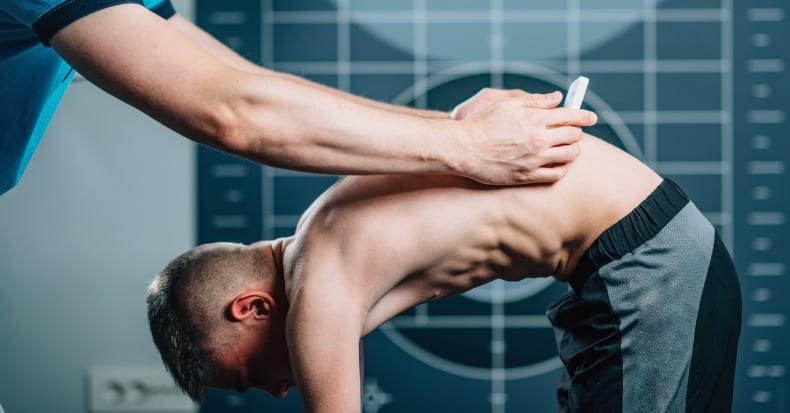Scoliosis is a condition that affects about 3% of teenagers, though the cause is typically unknown. In most instances, the degree of spinal curvature is mild (10-15º curve), but in some cases, the curve may continue to increase as the child grows.
Visible signs of adolescent idiopathic scoliosis include the following: uneven shoulders, one shoulder blade “sticking out” (more prominent) than the other; an uneven waist or a hip higher than the other; and/or a prominent rib cage, usually on the convex side of the curve.
When the curve is small, there are often few if any symptoms. However, if the curve worsens, the child may experience complications, which may require treatment. Complications associated with scoliosis primarily occur in those with larger curves and involve heart and/or lung problems due to the spine shortening and rib cage distortion as the curve progresses, making it more difficult for the heart to pump or for the lungs to expand. Due to changes in spinal biomechanics, individuals with scoliosis may also report chronic back pain and other musculoskeletal conditions.
Scoliosis is diagnosed following a routine patient history and physical examination, as well as standing x-ray of the lower and middle back in order to more accurate determine the degree of spinal curvature. In mild cases, treatment may not be required; however, if the condition worsens or in more severe cases, standard medical treatment may include wearing a back brace or possibly even surgery.
Does chiropractic offer a treatment approach for scoliosis? In a study published in January 2017, researchers reviewed the case history of 60 scoliosis patients treated in a chiropractic setting. The patients received a combination of chiropractic spinal manipulation and exercise approaches including cantilever, postural weighting, fulcrum block, and rotatory torso therapy ball exercises. The results showed successful outcomes in 90% of the cases with 52% of patients experiencing a curve correction and curve stabilization in 38% of the patients. This adds to previous studies and case reports on the effectiveness of both therapeutic exercises and manual therapies for the management of scoliosis.
